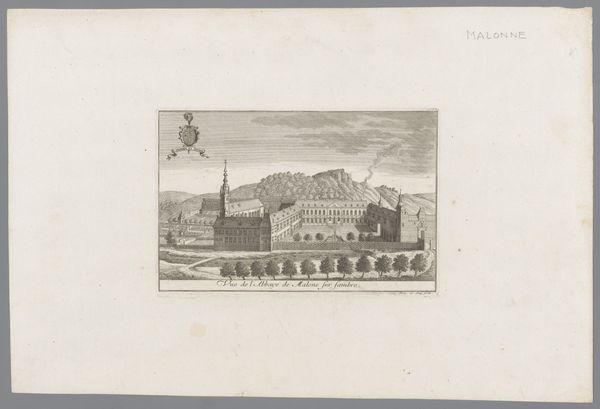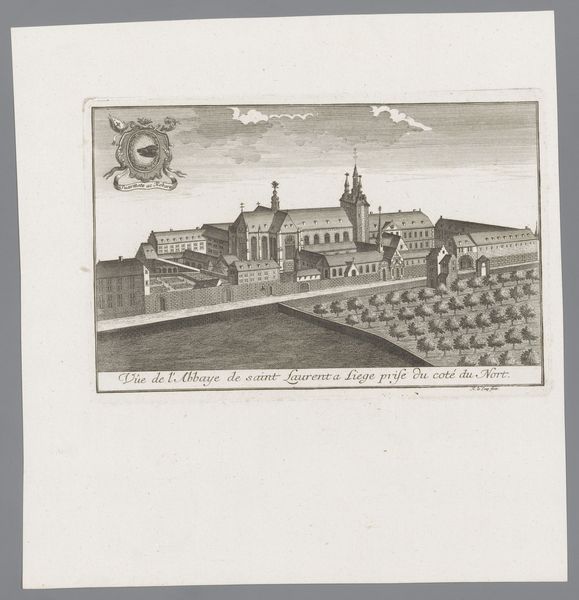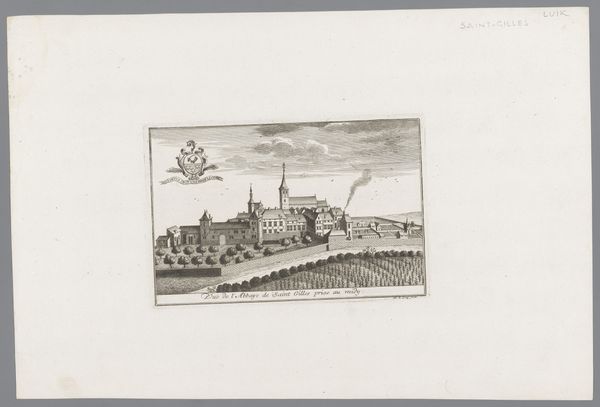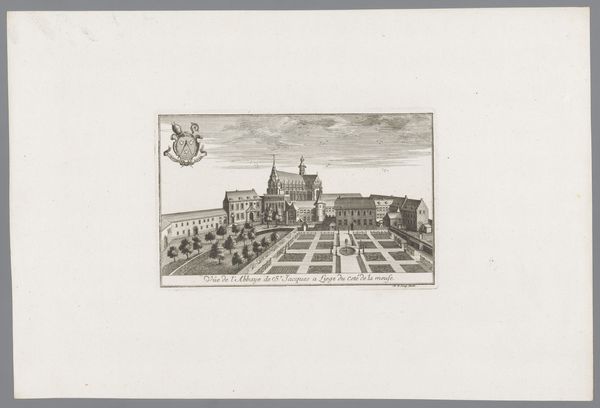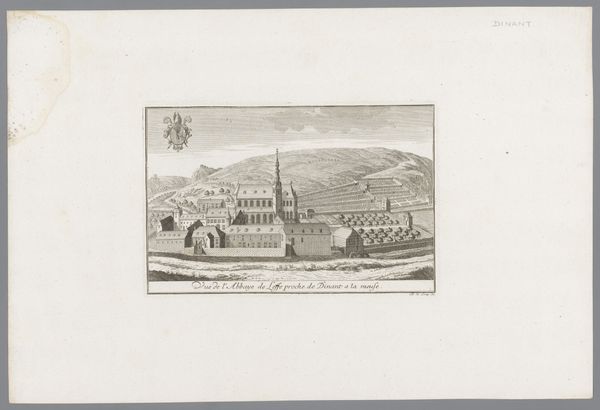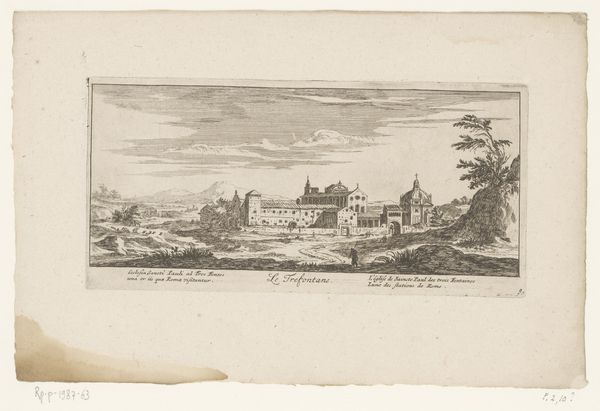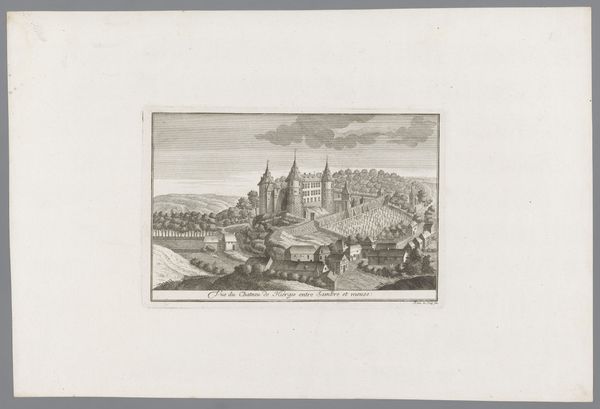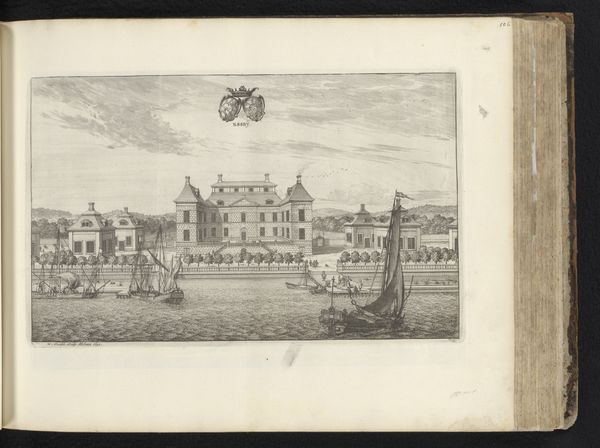
print, engraving
#
baroque
# print
#
landscape
#
cityscape
#
engraving
Dimensions: height 140 mm, width 219 mm
Copyright: Rijks Museum: Open Domain
Editor: So, this is an engraving called "Gezicht op het Kartuizerklooster van Luik op de Mont Cornillon," dating back to sometime between 1738 and 1744. It depicts a Carthusian monastery. What I find most interesting is the stark contrast between the detailed architectural rendering and the relatively empty landscape around it. What do you make of it? Curator: It is crucial to contextualize this image within the broader framework of power and representation. Look at the way the monastery is positioned— elevated, fortified, almost impenetrable. What does that tell us about the social role of the Church at that time? Consider also the subjects absent from this "landscape". Who had access to be in that territory? How would gender or social status play in this scenario? Editor: That's interesting. It makes me think about the monastery as not just a religious space but also as a symbol of authority, almost a fortress. Are you suggesting that these cityscapes were a way to subtly reinforce the existing social hierarchy? Curator: Exactly. Think about who commissioned these prints and who consumed them. This isn’t just a depiction of a place; it's a carefully constructed narrative. The choice to focus on the monastery’s imposing structure rather than, say, the lives of the people who sustained it, is deliberate. Where does it stand within that conversation in terms of privilege and marginalization? Editor: So, by focusing on what’s included and what's left out, we can understand the values and power dynamics of the society that produced it. I'd never thought about cityscapes in that light. Curator: Precisely! These images served as tools for asserting dominance, normalizing privilege, and, in some cases, erasing the presence and contributions of marginalized communities. Engaging with historical and theoretical lenses can unveil a far deeper meaning, thus moving the focus onto conversations related to contemporary challenges. Editor: Thanks, that's really given me a lot to consider, framing the work from a historical, sociological perspective. It is amazing what you learn looking closely at it.
Comments
No comments
Be the first to comment and join the conversation on the ultimate creative platform.
